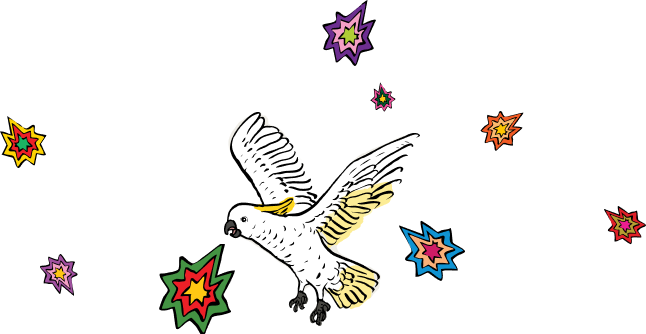Reviewed by: Binge Fringe
Was Hamlet truly mad? It’s one of the most enduring debates surrounding Shakespeare’s most famous play. The Danish prince is driven to madness by the knowledge of his father’s murder at the hands of his uncle—now his stepfather. Or is it all just an act? Sam Blythe breathes surprising freshness into the text, making even the most familiar lines feel as though they’re being thought up on the spot.
Locked in a small room with a couple of clown noses and a chest containing a script for a one-man Hamlet—adorned with a sticker of the Welsh dragon—Blythe dons the clown nose and performs the play’s most iconic scenes. Meanwhile, a mysterious voice (a nurse? His mother?) interrupts him in Welsh. This voice seems to unsettle him, pulling him out of character and back into the role of the performer: an almost mute clown seeking refuge in Shakespeare.
As Hamlet’s descent into madness grows more palpable, the lines between character and performer blur, and the Welsh interruptions become more frequent. This is a rare treat, as Shakespeare is traditionally performed in an RP accent, though Welsh suits the text beautifully. Blythe dedicates the performance to his late father, a Welsh actor who never played Hamlet nor had the chance to perform in his native accent. This personal connection helps justify some of the creative choices, though I still found myself confused about the identity of the voice and its connection to the performer. Now, full disclaimer: I had barely been in Australia for 24 hours when the play began and was (and still am) suffering from considerable jet lag. There’s a chance I missed something that tied everything together, but I can only write from my experience.
There’s no doubt that Sam is a spellbinding performer. He delivers Shakespearean lines you’ve heard a hundred times as though he’s thinking them for the first time—exactly as it should be. He’s a fantastic Hamlet, but I found myself wanting more context for the framing device. Setting aside my frustrations with the framing, the performance is entertaining from beginning to end. Even in moments when I couldn’t fully grasp the bigger picture, I was enraptured by Sam’s terrifying portrayal of the ghost and the many facets of Hamlet’s character: his desperate breakup with Ophelia, his enthusiastic direction of the actors, and his spiralling madness.
While I was already familiar with the events of Hamlet, the performance felt quite insular. I’m not certain I would have been able to follow the story without prior knowledge of Shakespeare’s work. Similarly, the Welsh elements seemed to reference something deeply personal or cultural, leaving me feeling left out, as though I was missing the punchline of an inside joke.
Despite my frustrations, the performance remained captivating. Sam Blythe’s talent is undeniable. However, the overall feeling is one of unresolved tension. The audience is left wanting for more clarity—about the framing device, the significance of the Welsh interruptions, and the deeper connection between the performer and the play.
While the performance shines in its emotional intensity and fresh delivery, it ultimately feels unfinished.
Recommended drink: In keeping with the Welsh pride, I believe a good Welsh beer is in order.
You can catch Sam Blythe: Method in my Madness (A One Man Hamlet) at The Chapel @ Courtyard of Curiosities at the Migration Museum until March 2nd at 18:50. Tickets are available through the Adelaide Fringe Website.




